Dr. Jonathan Barichivich

Global climate and ecosystem science
See me in GoogleScholar
Alerce Costero rainforest monitoring supersite
Project description: The CL-ACF research site in southern Chile (Alerce Costero National Park) is an environmental observatory of an old-growth Fitzroya cupressoides coniferous rainforest (~300 years). The site has been active since 2018 and is affiliated with the AmeriFlux network of flux towers. Central to this site is a flux tower of 36 m, complemented by an array of environmental monitoring systems including dendrometers, meteorological stations, sapflow, and a streamflow gauge. Fitzroya is an endangered paleoendemic species of the temperate rainforest that thrives in a cool and wet climate. The species face imminent threats from the ongoing warming and drying of the climate.

Current view of the site from PhenoCam.
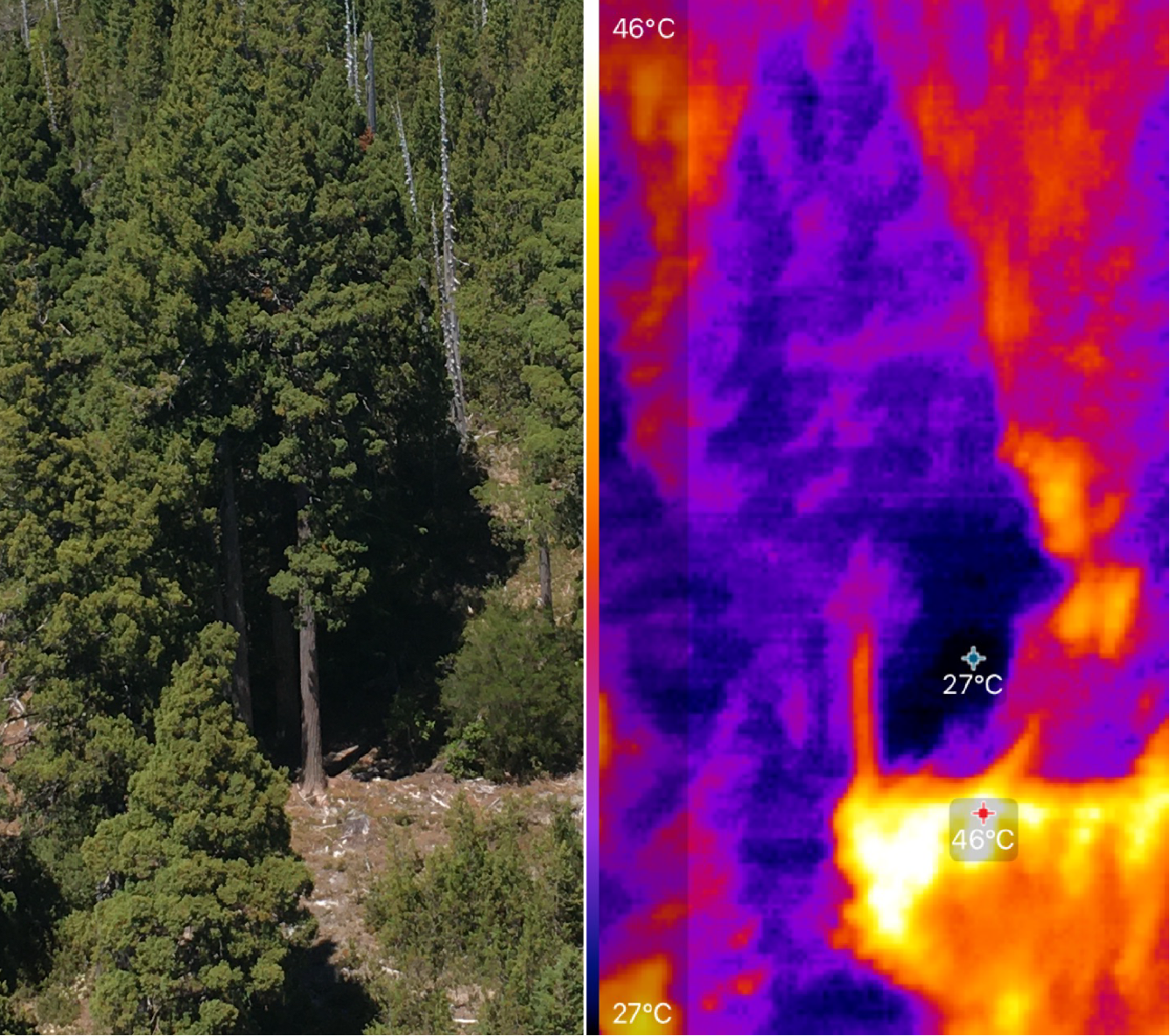
Thermal view of the Fitzroya forest.
1. Site setup
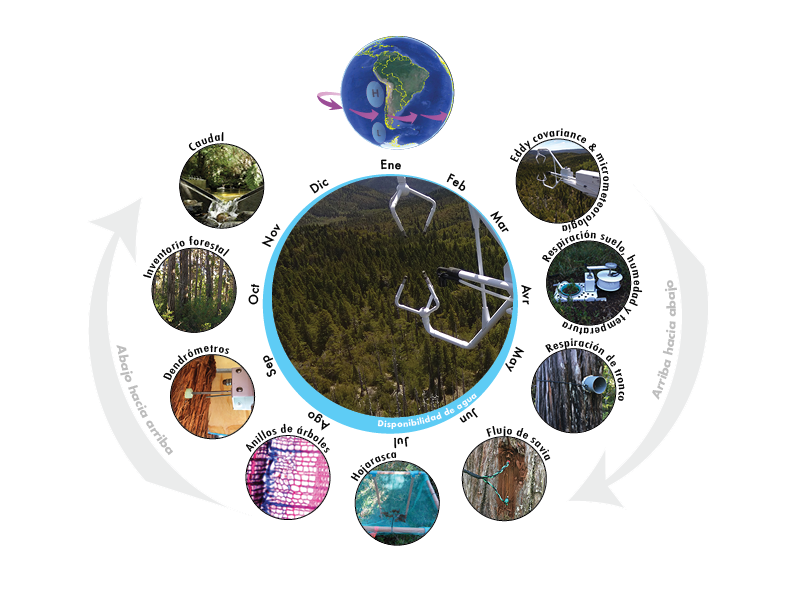
Biogeographic location and seasonal water availability at the monitoring site together with the set of top-down and bottom-up measurements collected simultaneously.

Environmental variables recorded at the site and location of plots and footprint of the eddy tower.

View of the tower and data collection.
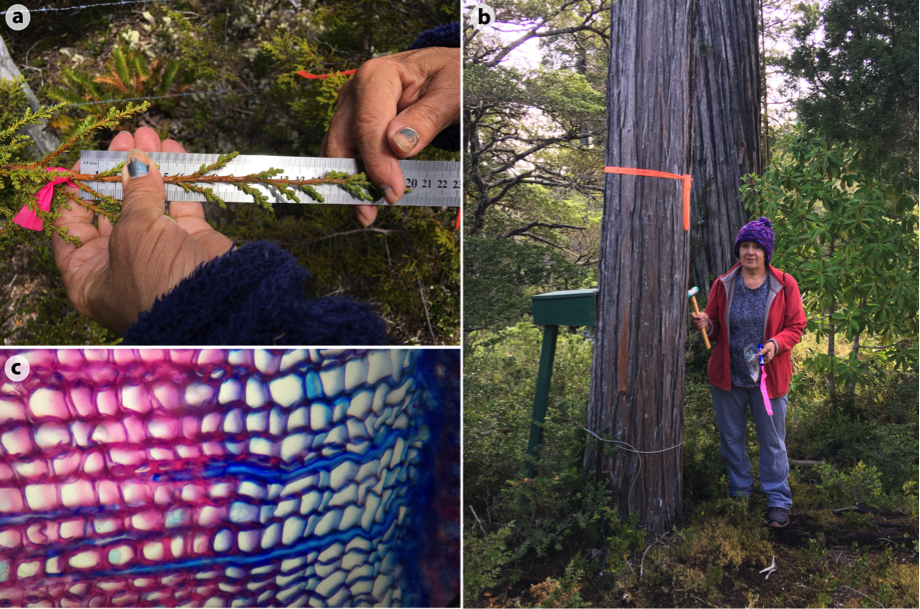
Shoot growth and xylogenesis monitoring in the footprint of the flux tower.
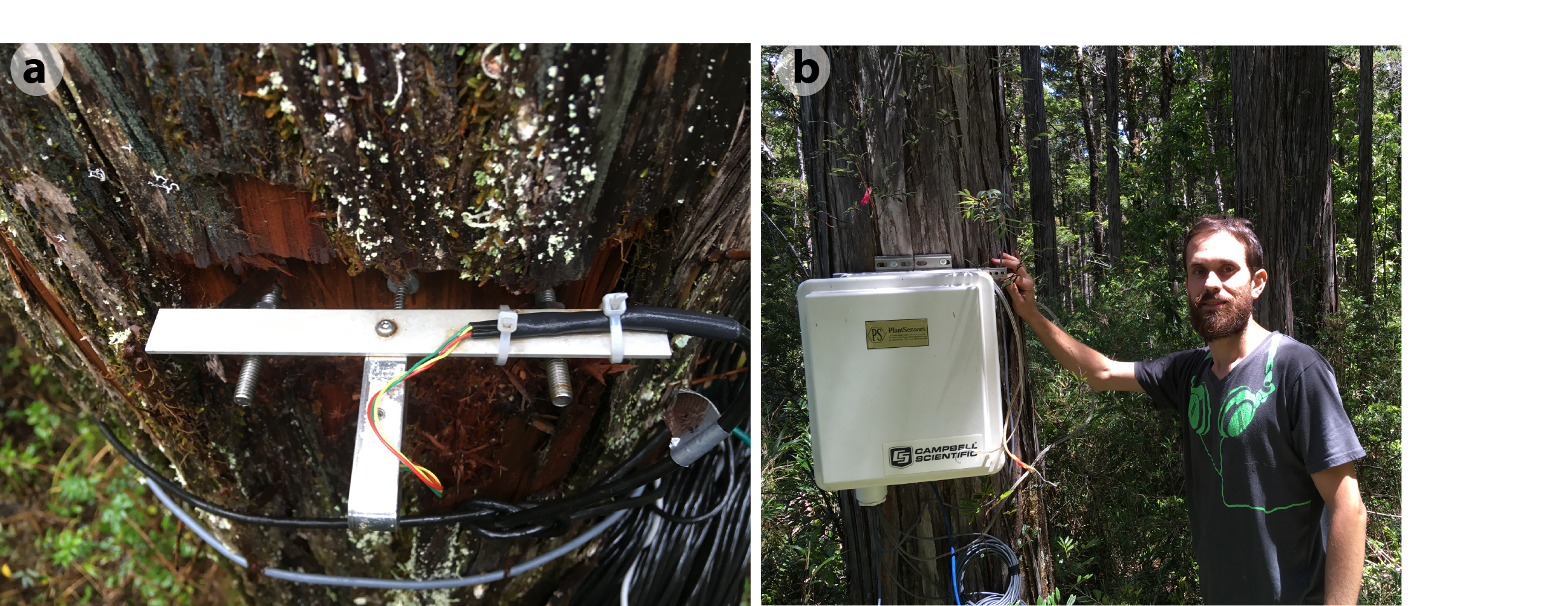
Sub-hourly dendrometer and sapflow measurements in the footprint of the flux tower.
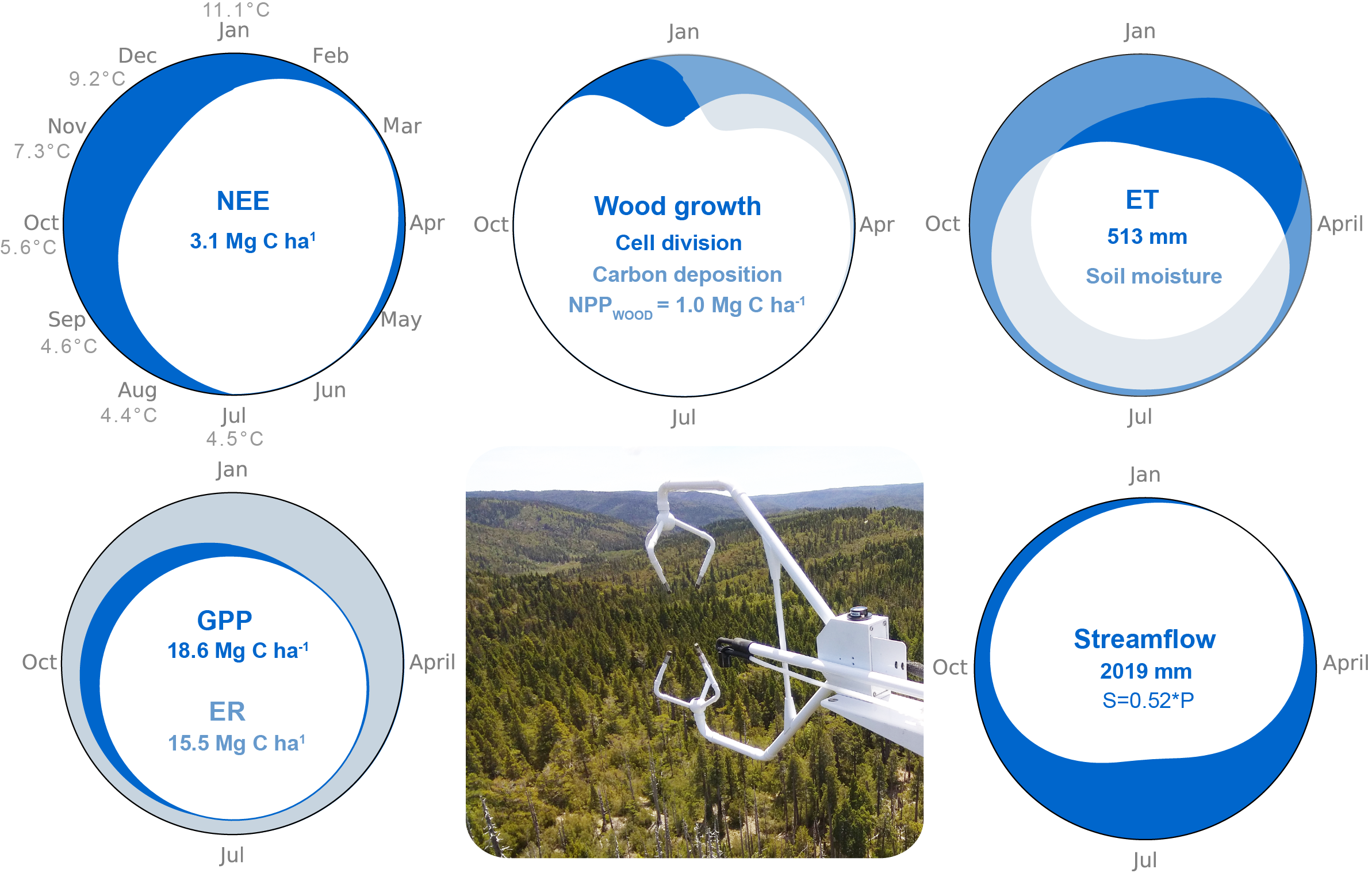
Biological clocks of our coniferous rainforest ecosystem in southern Chile as revealed by simultaneous eddy covariance and cambial growth monitoring.
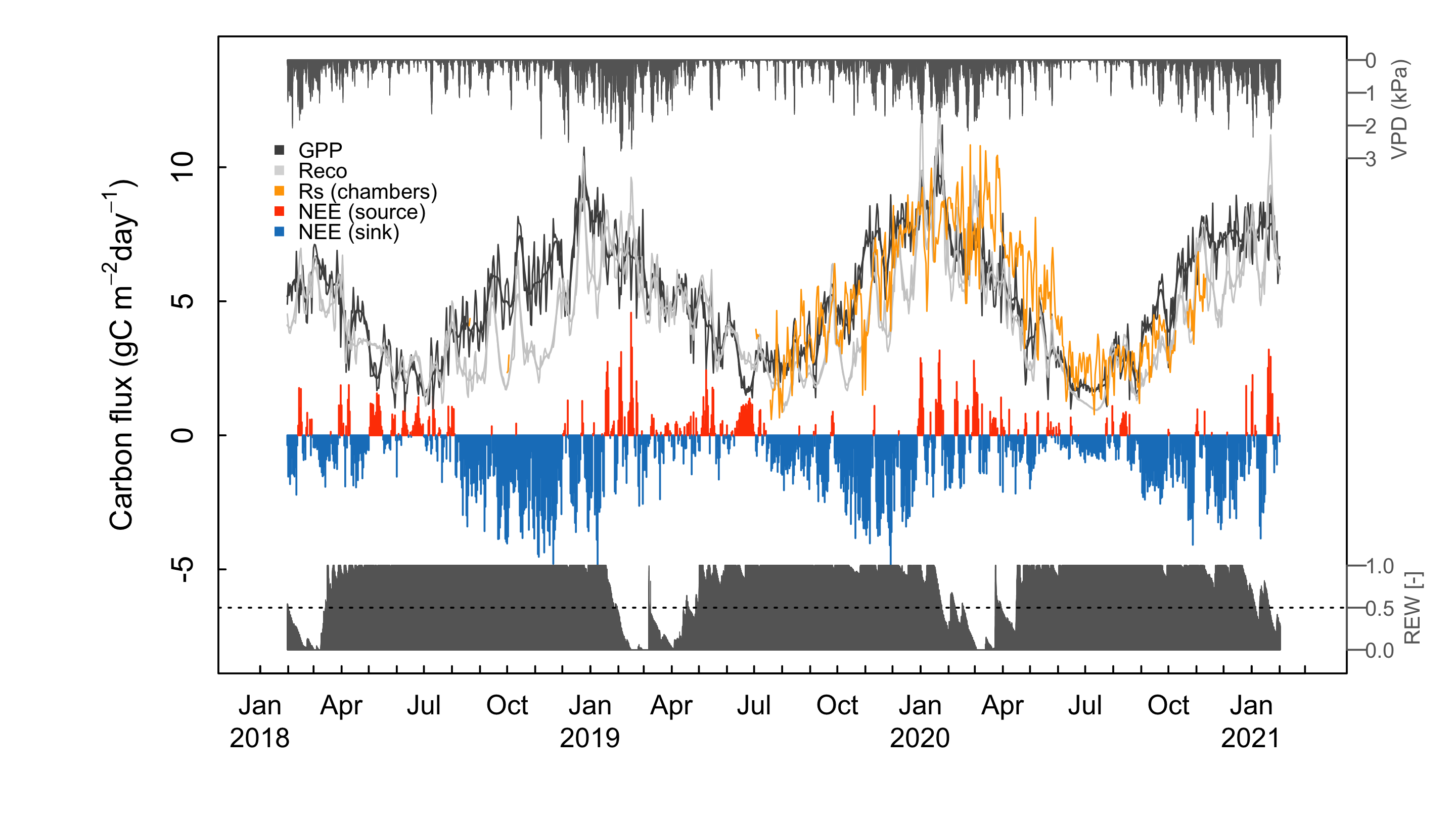
Seasonal variation of carbon fluxes along with atmospheric and soil dryness during the 2018-2021 period.
Scientific publications
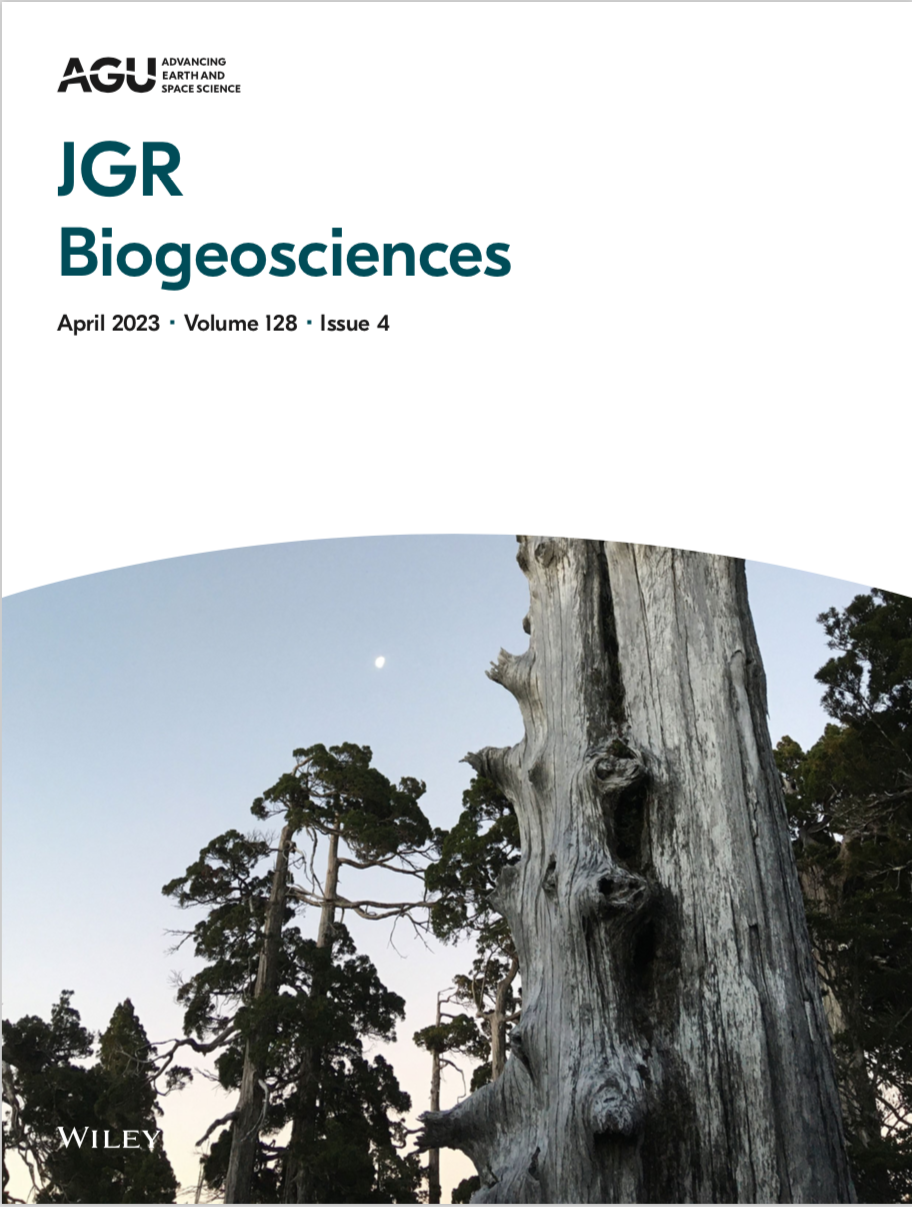
Perez-Quezada, J., Barichivich, J. et al. “Warming and drought weaken the carbon sink capacity of an endangered paleoendemic temperate rainforest in South America.”. JGR: Biogeosciences, [2023].